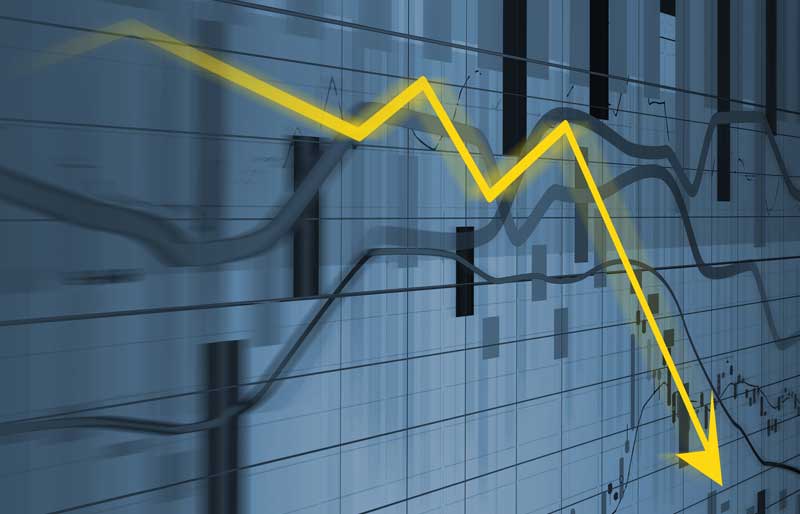25
May 2016
Economic Woes Set To Continue
Recent times have seen the organisations such as the IMF (International Monetary Fund) cut their predictions for worldwide growth this year- for the umpteenth time. It should hardly come as a surprise given the current mood of gloom that pervades each and every financial news stories in recent memory. There are few things around the world that have economists fired up at the moment, and those few things are quickly fading. Out the world’s developed countries, the United States has seen an average of 1% growth in the last two quarters. Increased levels of stimulus have helped the eurozone on its way somewhat, but growth in the overwhelming majority there is still below 1%. The trial run of what has been labelled “Abenomics” is grinding to a halt in Japan; the economy there has been faltering since last summer and a recession seems to be on the horizon. The uncertainty being caused by the EU referendum is continually forcing firms to delay hiring and spending in the United Kingdom. Whilst other countries such as Norway, Australia and Canada are all battling against the crashing commodity prices. Emerging economies are not faring much better. Out of the Brics, Brazil and Russia are both in recession, South Africa is showing no signs of real growth and China’s sharp downturn is one of the driving factors behind all of this misery. India is the only one that is seen to be doing well at all and that is only really because of the poor performance of its peers. These countries are not alone. A huge number of emerging markets have not seen proper growth since 2013. On top of all of this, potential growth has dropped too, in both emerging and advanced economies. Nouriel Roubini, a professor at NYU’s Stern School of Business, believes that “high levels of private and public debt are constraining spending – especially growth-enhancing capital spending, which fell (as a share of GDP) after the global financial crisis and has not recovered to pre-crisis levels. That decline in investment implies slower productivity growth, while ageing populations in developed countries – and in an increasing number of emerging markets (for example, China, Russia, and South Korea) – reduce the labour input in production”. The increase in wealth and income inequality is making the the global saving excess even worse, as it acts as the counterpart to the drop in global investment. As value moves towards capital and away from labour, it is moving towards people who are more likely to save (high income homes and companies), and it is moving away from people who are more likely to spend (lower and middle income homes). This drawn out cyclical drop can lead to something called “hysteresis” or “lower-trend growth”. As Roubini explains, this refers to a pattern that goes as follows: “long-term unemployment erodes workers’ skills and human capital; and, because innovation is embedded in new capital goods, low investment leads to permanently lower productivity growth”. This is not helped at all by the fact that serious structural revisions are needed to combat the multitude of factors that are pulling possible growth downwards. However, those reforms are happening very slowly in both emerging and advanced economies. The main reason for this is the fact that most of these reforms require a high amount of “sacrifice” in the short-term, while the benefits will only be seen in the medium to long-term. This means that those individuals who are opposed to these changes have a significant political advantage. At the same time, Roubini reminds us, growth stays underneath the level that it could be reaching: “A painful de-leveraging process implies that private and public spending need to fall, and that savings must rise, to reduce high deficits and debts. This process started in the US after the housing bust, then spread to Europe, and is ongoing in emerging markets that spent the past decade on a borrowing binge”. The blend of policies, which have been implemented worldwide in recent times, has not been helpful to the situation at all. The majority of advanced economies have turned to fiscal retrenchment too swiftly, monetary policies with no proven economic soundness were adopted and the results have been almost negative. Roubini continues by explaining that a discord has developed between economies that borrow and those that lend. “The former, having overspent and under-saved, had to spend less and save more when markets forced them to do so, whereas the latter were not forced to spend more and save less. This exacerbated the global savings glut and investment slump”. “Finally, hysteresis further weakened actual growth. A cyclical slump reduced potential growth, and the reduction in potential growth prospects led to further cyclical weakness, as spending declines when expectations are revised downward.” One of the few things that it is clear, is the fact that there is no easy answer to the position that we have found ourselves in. Debt that has reached dangerously high heights, needs to be brought down in a swift and considered manner, lest we drag ourselves through a lengthy and drawn out de-leveraging process, which could span the next ten years at least. However, there are no proper debt-reduction mechanisms in place for nation states, and even within countries it is difficult to execute for firms, households and financial bodies. Similarly, we need to undergo some serious reforms both marketwise and structurally. However, as the benefits take so long to be noticed, it is not a very popular political route to go down- especially in a world that has become so gripped by polarised party politics. Roubini also believes that the monetary policies that have defined recent years will not get any easier to shake off anytime soon. “It will be no less difficult to leave behind unconventional monetary policies, as the US Federal Reserve recently suggested by signaling that it will normalise policy interest rates more slowly than expected. Meanwhile, fiscal policy – especially productive public investment that boosts both the demand and supply sides – remains hostage to high debts and misguided austerity, even in countries with the financial capacity to undertake a slower consolidation”. If this all makes for very glum reading, it should. The economic climate that were are currently faced with is in no way stable. It is seeing inequality is increasing on several fronts, and reactionary parties are seizing upon their opportunity- created by the concern and discontent in the wider population. It is unlikely that financial news writers will be able to report sunnier things anytime soon. Unless global leaders can combat this problem in a united economically driven manner, then this is the outlook for the foreseeable future. As Roubini says: “Thus, for the time being, we are likely to remain in what the IMF calls the “new mediocre”, Larry Summers calls “secular stagnation”, and the Chinese call the “new normal”, But make no mistake: there is nothing normal or healthy about economic performance that is increasing inequality and, in many countries, leading to a populist backlash – both on the right and the left – against trade, globalisation, migration, technological innovation, and market-oriented policies.”





